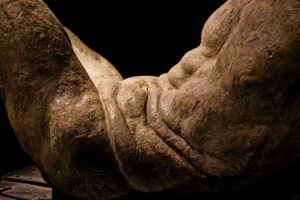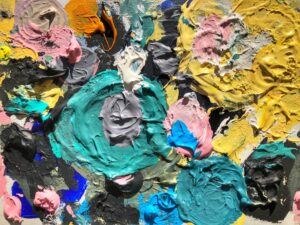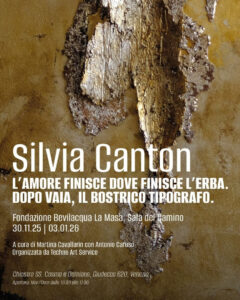In this article, you will explore the fascinating world of para-logical art and its power to stimulate critical reflection. You will discover how this artistic approach, which combines rational and illogical elements, challenges your perceptions and encourages you to look beyond the appearance of things. We will explore the basic principles of para-logical art and concrete examples that invite contemplation. Get ready to question your beliefs and see the world from a new and challenging perspective.
Paralogical art: definition and origins
Paralogical art is a contemporary art movement that challenges traditional conventions, inviting you to explore concepts and ideas outside conventional logic. It uses forms and representations that often contradict expectations, stimulating your critical thinking and personal reflection. Its origins lie in different philosophical and cultural contexts, offering a unique insight into the evolution of modern artistic thought.
Historical Origins
The origins of paralogical art date back to the late 20th century, when artists and philosophers began to question established artistic norms. This current developed in response to the historical avant-gardes and incorporated elements of postmodern philosophy, prompting reflection on how art can break through the barriers of rationality and logic.
Key concepts
The key concepts of paralogical art include absurdity, ambiguity and contradiction. These elements invite you to reconsider what you perceive as real and logical, immersing you in a process of exploration and self-reflection.
In the context of paralogical art, absurdity serves to question your common sense, while ambiguity encourages you to seek deeper meanings in the works. Finally, contradiction encourages you to recognise that reality is not always linear and clear. These concepts are fundamental to understanding and appreciating paralogical art, as they offer you new tools to explore art and life itself in unconventional ways.
Reflection in paralogical art
In paralogical art, reflection is a central element that stimulates your critical thinking and creativity. Through works that challenge convention and use seemingly contradictory logic, you are invited to contemplate and question the deeper meaning of art itself. This process of reflection allows you to explore new points of view and discover hidden meanings in artistic expressions.
Function and purpose
The function of paralogical art lies in its ability to provoke personal reflection. It can serve as a mirror, reflecting your ideas and emotions, and prompting you to reconsider your perceptions. The aim is to broaden your understanding of the human experience, taking you beyond easy answers and inviting you to a deeper search.
Impact on perception
Paralogical art has a significant impact on your perception, challenging your expectations and the way you see the world. These works invite you to break the boundaries of conventional thinking and consider artistic alternatives that reflect complexity and ambiguity. This approach helps you develop a greater open-mindedness towards ideas that go beyond superficial appearances.
When you interact with paralogical art, you notice how your brain works differently. The works can activate internal dialogues, provoking questions about social conventions and your personal interpretations. This challenge to your perception not only enriches your artistic experience, but can also lead you to personal growth and an evolution of your critical thinking. You realise that art is not just an object to be observed, but an engaging experience that invites you to actively participate in the discovery of deeper meanings.
Theories and practices
Within paralogical art, many theories and practices intertwine, inviting you to explore new ways of thinking and perceiving. This art form stimulates your curiosity and encourages you to question conventions, offering a fertile field for interpretation and debate. Through it, you can discover how complex ideas can be represented visually, pushing the boundaries of your understanding and emotions.
Philosophical approaches
The philosophical approaches underlying paralogical art offer you a basis for discussing the absurd and illogical, allowing you to explore meaning and non-sense in life. Philosophers such as Søren Kierkegaard and his concept of the ‘leap of faith’ inspire this art form, where personal interpretation of works must be a subjective journey, challenging your beliefs and preconceptions.
Contemporary examples
Among contemporary examples of paralogical art, the works of artists such as Maurizio Cattelan and Olafur Eliasson stand out for their ability to subvert expectations and stimulate deep reflection. These artists play with forms and concepts, prompting you to consider reality in new and unexpected ways. Each creation invites you to question existential, political and social issues, making the artistic experience as provocative as it is engaging.
Taking contemporary artists as a reference, you can see how their works challenge traditional aesthetic norms and push for emotional and intellectual impact. Cattelan, for example, uses sarcasm and irony to deal with sensitive issues, while Eliasson creates installations that reflect on the perception of reality. These works not only stimulate debate, but also encourage you to explore your subjectivity, making the artistic process a journey of self-discovery and critical reflection. Engage with their art, allowing it to transform your understanding of the everyday world.
Criticism and reflection
When you venture into the world of paralogical art, you may come across critics who question its validity and impact. These opinions range from arguing that paralogical art is too ambiguous, to suggesting that it offers no real aesthetic value. However, it is crucial to consider that every art form stimulates personal reflection and interpretation.
Controversies in the field
Controversies in the field of paralogical art often arise from its deliberately provocative nature. Some critics argue that this art form can confuse the public, making it difficult to discern the meaning behind the works. In response, many artists claim that this ambiguity is exactly what invites reflection and dialogue.
Responses to criticism
Responding to criticism, paralogical art artists emphasise the importance of provocation as a tool for conceptual exploration. They argue that art must challenge conventions, provoking questions rather than providing definitive answers. This ability to stimulate open discussion is what makes paralogical art essential in the contemporary landscape.
Moreover, responses to criticism highlight how the unconventional approach of paralogical art encourages greater interaction between the work and the viewer. It gives you the opportunity to reflect on complex issues and explore your own emotions and thoughts. In this way, although it may seem controversial, paralogical art plays a key role in promoting dialogue and critical reflection.
Practical applications of paralogical art
Paralogical art has many practical applications that stimulate creativity and reflection in different areas. In educational contexts, it allows you to learn in innovative ways, while in the artistic sphere, it offers new perspectives on visual works, provoking questions and expressing deep emotions. By exploiting these principles, you can enrich your cultural and communicative experiences.
In education
In education, paralogical art helps you develop critical and creative thinking. You can use techniques such as lateral thinking to promote discussions and reflections that go beyond traditional content. This encourages active learning and greater understanding of concepts.
In visual art
In the field of visual art, paralogical art offers a new dimension to the way you perceive and interpret works. The use of strikingly contrasting elements can generate visual dialogues that challenge conventions and invite you to explore more complex meanings. Works that apply these principles usually do not simply express a message, but create an interactive experience that engages you emotionally, prompting you to explore different narratives and reconsider what you see. This interaction can become a powerful tool to open your mind to new ideas and perspectives, thus stimulating deep conversations and meaningful reflections.
Future of paralogical art
The future of paralogical art promises to be full of challenges and opportunities. As society evolves, this art form will continue to stimulate debate and critical reflection. You may discover how new approaches and technologies affect the creation and enjoyment of art, inviting artists and audiences to re-evaluate their perceptions and the dynamics of the contemporary world.
Emerging trends
Emerging trends in paralogical art include a growing interest in multidisciplinarity and sustainability. You may notice how artists and curators are integrating ecological practices and interactive collaborations, creating works that not only challenge convention, but also invite greater social and environmental awareness.
Potential for development
The development potential of paralogical art is vast and stimulates continuous innovation. Your active involvement in artistic dialogue can drive the emergence of new ideas and forms of expression, bringing relevant and contemporary issues to light.
By further exploring the potential for development, you may discover how the interaction between art and technology is giving rise to immersive and engaging experiences. The use of augmented and virtual reality, for instance, offers a new language for artistic expression, allowing traditional boundaries to be transcended. Moreover, the interdisciplinarity of contemporary practices fosters a dialogue between different art forms, thus fuelling critical and profound reflection on contemporary issues. Your active participation can help shape this evolving landscape, leading paralogical art towards a challenging and provocative future.
How does paralogical art invite reflection?
In conclusion, paralogical art offers a unique space for your personal and critical reflection. Through its unconventional approach, it invites you to question your beliefs and explore new perspectives. This type of art stimulates dialogue and fosters a greater awareness of the complexities of reality. By embracing these experiences, you will develop a broader and deeper view of the world around you, facilitating a more authentic and personal understanding of contemporary issues.



